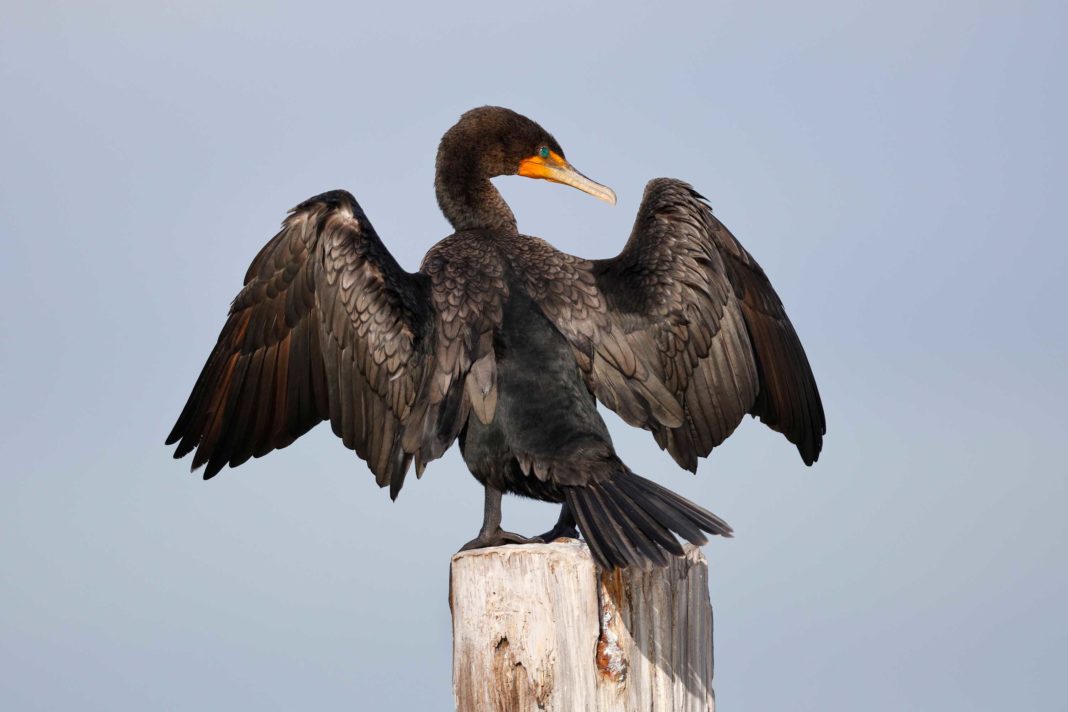ONTARIO – Fifty-one experts say a hunt targeting double-crested cormorants slated to begin September 15 has no basis in science. And in their open letter to John Yakabuski, the Ontario minister of Natural Resources and Forestry, they outline that the ministry needs to adopt targeted, localized management approaches.
The Ministry of Natural Resources and Forestry (MNRF) announced the hunt on July 31, a fall harvest, and said it will allow a hunter with an outdoors card and small game licence to cull up to 15 birds per day from September 15 to December 31.
“The harvest will help address concerns about impacts to local ecosystems by cormorants, a bird that preys on fish, eating a pound a day, and that can damage trees in which they nest and roost,” the ministry said in the release.
In response, the open letter, signed by ecologists, fisheries scientists and natural resource managers from Canada and the US, said the decision lacks scientific basis.
“On July 31 the government of Ontario announced a 90-day fall hunt on double-crested cormorants when a hunter can take 15 birds a day.
As ecologists, fisheries scientists and natural resource managers, we are concerned at the lack of scientific examination associated with the announcement,” it reads. “(The harvest) originates from, and is regulated, by the (MNRF) whose mandate is to ‘sustainably manage Ontario’s fish and wildlife resources’ and as such, the justifications provided for cormorant management should be science-based and backed by rigorous analyses.”
“To sustainably manage a resource, population objectives must be identified to ensure persistence of the population through time.
No rationale is provided as to why a province-wide hunt is being adopted instead of targeted localized management approaches,” the letter continues. “This is especially important for addressing fish populations believed to be impacted by cormorants and impacts to habitat because, if they are occurring, such impacts are a result of site- and time-specific conditions.”
It was pointed out, “the US environmental impact statement on cormorant control rejected hunting as an option, noting, ‘the proposed action (depredation orders) is preferable to hunting largely for ethical reasons.’ From purely biological and economic perspectives, hunting might prove an effective way to kill numerous DCCOs at minimal expense to the government. However, we have serious reservations about authorizing a non-traditional species to be hunted when it cannot be eaten or widely utilized and feel that there are more responsible and socially acceptable ways of dealing with migratory bird conflicts.”
It was noted the hunt departs from principles in the North American Model of Wildlife Conservation. “First, that wildlife should only be killed for a legitimate, non-frivolous purpose. Second, that scientific management is the proper means for wildlife conservation.”
“The hunt is problematic on many other fronts,” reads the letter. “While the announcement provided an estimate of the 2019 breeding population of cormorants, no assessment was provided that identified the replaceable and sustainable level of cormorant harvest. If 0.5 percent of small game hunters reached the daily limit for 10 days, that exceeds the estimated breeding population in Ontario. Further, there was no indication that reporting by hunters will be required, so how will the number of cormorants taken in a fall harvest be assessed? Without such reporting, two factors are of concern.”
The first is the inability to co-ordinate total numbers of cormorants killed with the US Fish and Wildlife Service on its proposed and probable control efforts. Secondly, it is pointed out there will be no data on the incidental take of migratory species that look similar to double-crested cormorants in flight such as the common loon.
“The approaches used to assess cormorant-fisheries interactions indicate that the MNRF will be unable to assess how the removal of an unknown number of cormorants from a location where no problems may even exist will be linked to the state of various fish populations across Ontario,” the letter continues. “On that basis alone, targeted, localized management approaches must be adopted instead of a hunt.”
“Minister Yakabuski, we call on you and the MNRF to provide a science-based, detailed and peer-reviewed approach to resolve conflicts with cormorants,” the letter continues. “At a minimum, the report should include: data on Ontario’s cormorant population (numbers of breeding birds and colonies), and population goals, including analyses on various take levels, the incorporation of ongoing management activities in the province (e.g., cull on Middle Island, Point Pelee National Park) and an estimate of how the population will respond to targeted localized management actions to ensure a sustainable population; detailed rationales and objectives for proposed localized management activities; and an explanation on how the MNRF will co-ordinate with the US Fish and Wildlife Service in managing the interior and migratory population of cormorants.”
In a statement published by CBC News on September 2, MNRF spokesperson Maimoona Dinani said the province has been hearing concerns from property owners, commercial fishers and hunters and anglers about the kind of damage cormorants have caused their communities.
“So the ministry is taking steps to help them deal with any local issues,” Ms. Dinani told CBC. “Cormorants prey on fish, eating a pound a day. Research shows they can impact some fish stocks, damage trees they nest and roost in, and their droppings can kill trees and destroy traditional nesting habitats for other water birds.
Ms. Dinani told CBC that the province currently has a healthy and sustainable cormorant population. She said the ministry will continue to monitor the double-crested cormorant population status and trends to support sustainability of cormorants in the province.





